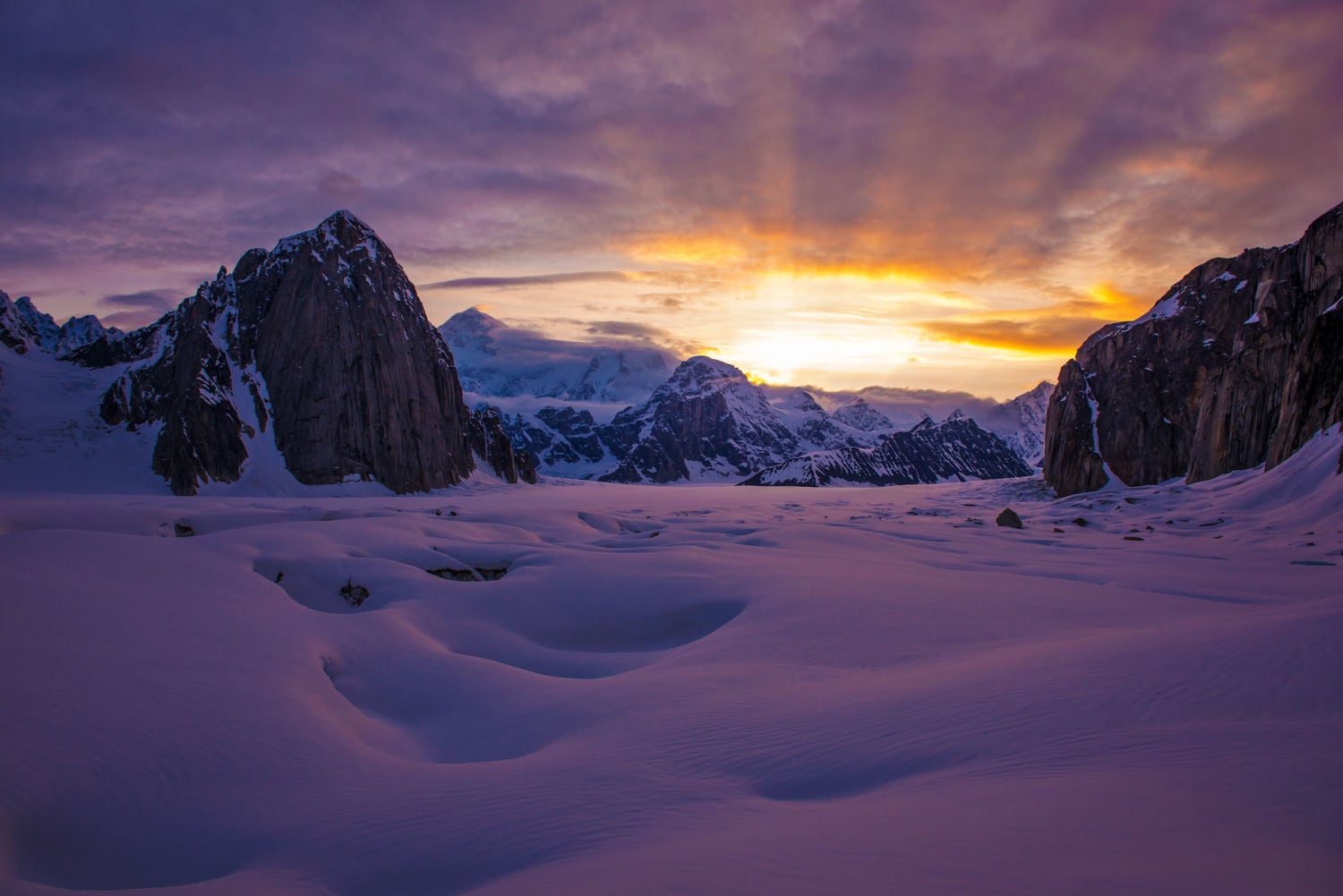As a professional photographer, I’ve been fortunate to have traveled to many of the most spectacular locations in the world. From Australia to Argentina, Cambodia to Costa Rica, I’ve pointed my lens at some of Mother Nature’s finest handiwork. People often ask me, “What is the most beautiful place you’ve ever visited?” For years I had an answer in which I was completely confident: the South Island of New Zealand. No contest. And then, a few months ago as our turboprop ski plane pierced the cloud ceiling revealing soaring granite walls that dwarf the finest towers in Yosemite, and a sea of ice terminating at “The Great Father,” Denali, I knew I had found my new Number 1.
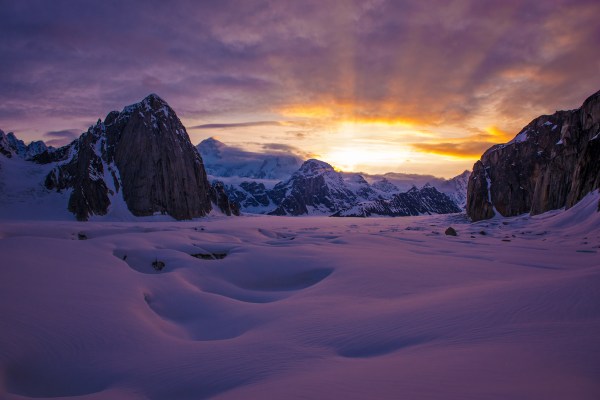
The Ruth Gorge is in the Alaska Range on the south side of Denali National Park & Preserve. Ice formed on Denali and surrounding lofty peaks carves its way through a deep canyon more than a mile wide and deeper than the Grand Canyon. The relentlessly carving ice has left the peaks with near-vertical granite walls over 40% higher than Yosemite Valley’s El Capitan, the wall by which all others are judged.
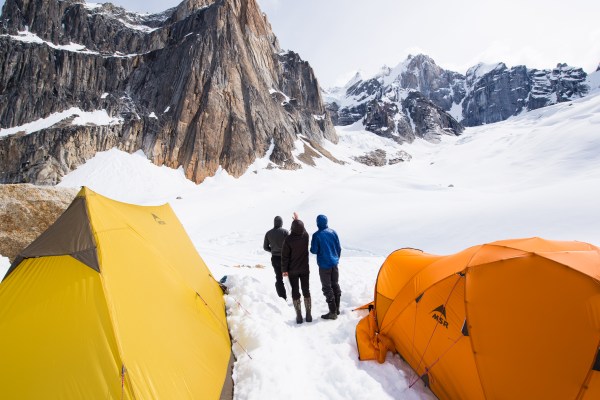
With preparation, timing and luck, many of these walls are climbable. In June, I joined a team with hopes of doing just that. We established a base camp at the bottom of a formation referred to as The Stump, and studied the routes as the cliffs shed water and snow from a recent spring storm.
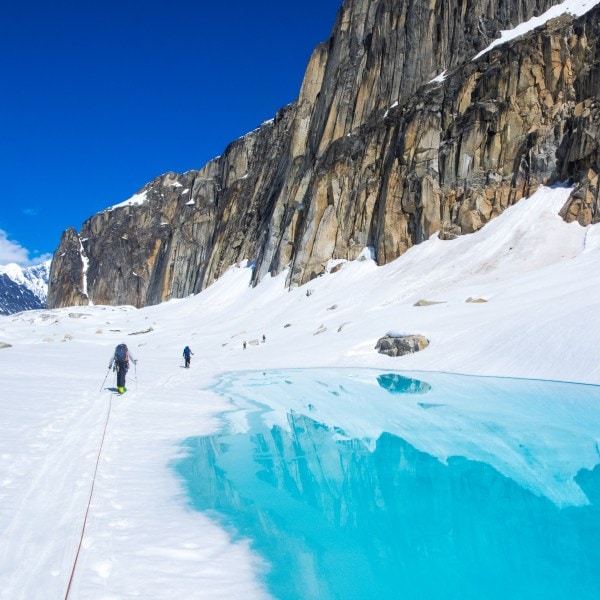
In classic Alaskan form, the weather was an ongoing challenge as we attempted to access our objectives. Occasionally brilliant sunshine helped create beautiful supraglacial lakes on the flanks of the Ruth Glacier.
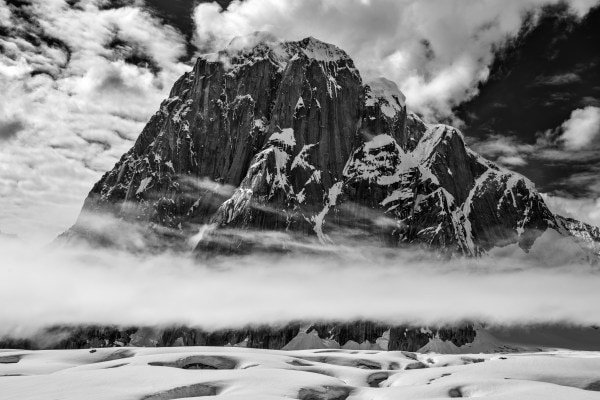
Ever present across the glacier from camp was Mount Dickey. There is truly no way to put this peak in perspective. Suffice it to say that it was a mile away, a vertical mile high, and when planes would fly across the face of the peak, they would disappear against the scale.
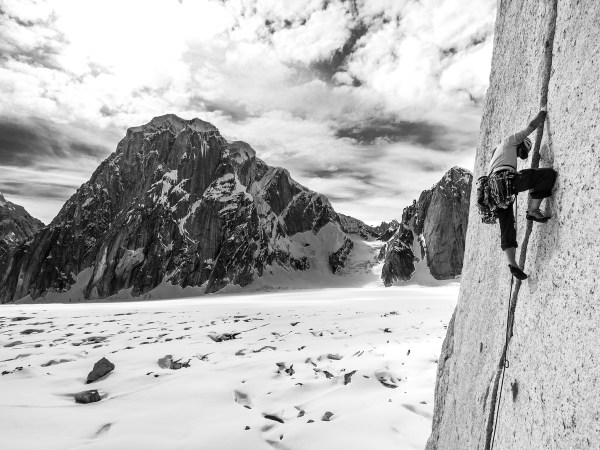
In the background, the 5,000-foot east face of Mount Dickey, with its ultra-technical mixed climbing, requires even super-elite climbers to spend up to a week on the wall. Luckily for us, it was out of condition, because it’s way out of my league. But across the glacier, we found plenty of opportunities to climb pitch after pitch of perfect golden granite in an ultimate alpine playground. Here’s Matt Henry enjoying crack climbing at its finest.

A convergence of flowing ice seen from a climbing route above camp as evening light strikes the lofty summits of the gorge.
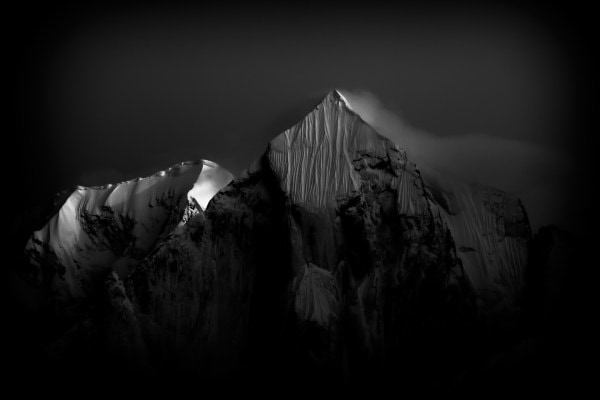
We spent the two weeks leading up to the summer solstice camped in the gorge, and were far enough north to experience never-ending daylight. The benefits of this were twofold: We never once had to use headlamps despite at times climbing through the middle of the night; and we were treated to an almost perpetual light show as the low-lying sun danced across the peaks during phenomenally extended sunsets and sunrises.
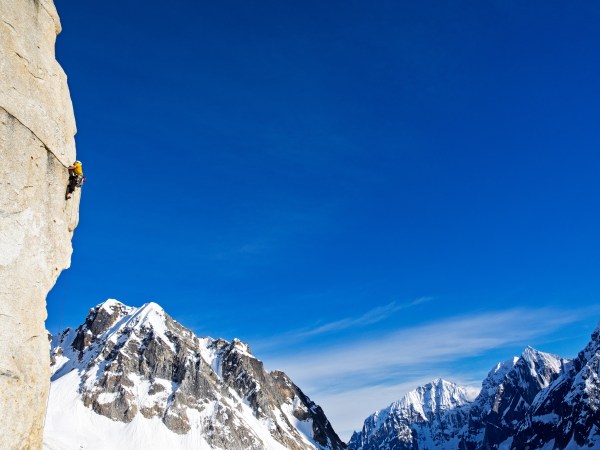
There are peaks and walls in the Ruth Gorge that are absolutely perfect for climbing. Here’s Tobey Carman on a choice bit of rock.
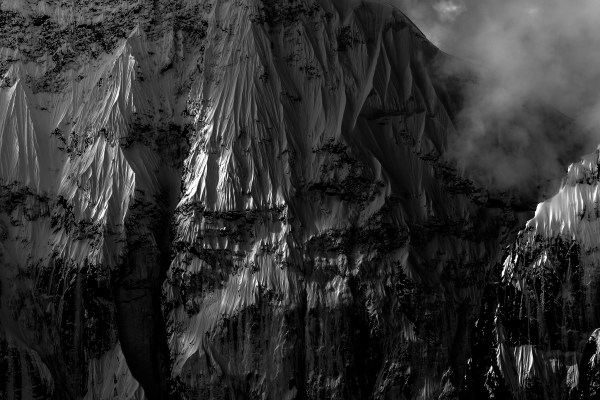
There are other areas that are a bit more hostile.
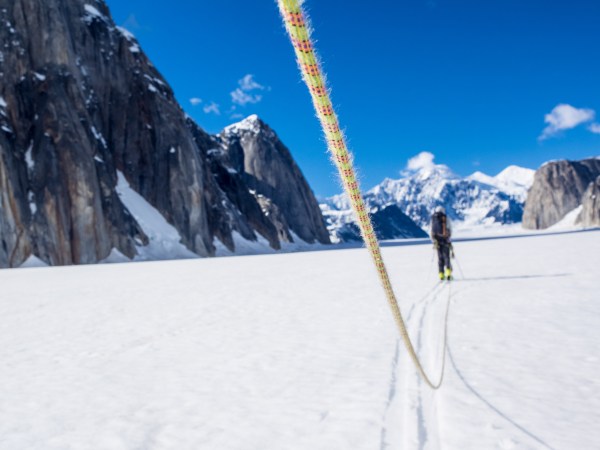
The Ruth Glacier is an extremely active one, moving at a rate of over three feet per day down valley. This makes it somewhat unpredictable and requires that great care be taken to avoid crevasses, the locations of which are in constant flux. Any foray beyond the frequently probed areas in camp requires a partner, rope and full glacier gear.
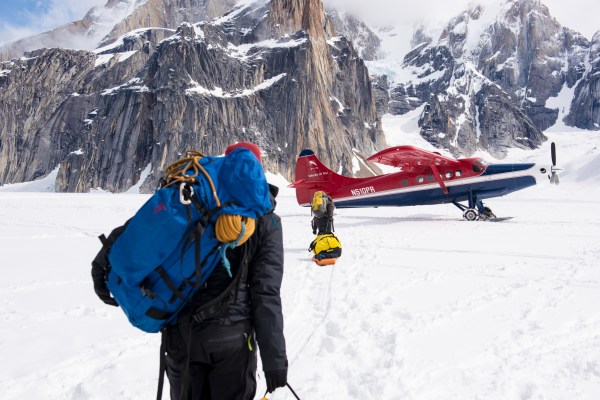
Alas, all great adventures must have an end. Ours was marked by the arrival of a turboprop Otter operated by the legendary Talkeetna Air Taxi service. A bittersweet moment, to be sure, but far better than the alternative of endless bushwhacking back to civilization. Mechanical advantage can be a beautiful thing, especially when showers, pizza and beer are expedited as a result.
